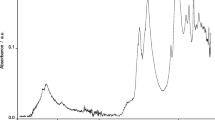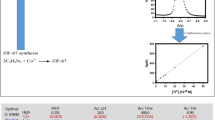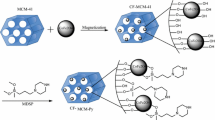Abstract
Voltammetry of microparticles has been used in this work for the qualitative and quantitative analyses of zinc, tin, lead and copper in binary, ternary or quaternary alloy samples. The analyses were carried out by spiking small amounts of the metals into a carbon paste electrode, after which they were anodically stripped off using differential pulse voltammetry. The work involved four separate experiments. The first one examined the type of electrolyte, which is suitable to identify the four elements. More specifically, the aim was to examine in which electrolyte all elements can be measured simultaneously–as would be the case in a quaternary copper alloy–without seeing any overlap in their current peaks. The second experiment focused on optimizing the measurement conditions with the aim of having the current peaks of each element well separated from the others. For this part, we made use of the central composite design. The aims were to: (i) maximize the separation between current peaks, (ii) determine which variable has a higher impact on the response, (iii) give an insight in the robustness of the method close to the optimum conditions and (iv) eventually show interactions between variables. In the third experiment, the four elements were quantified in their binary mixtures. Here, the percentage of the oxidation current for each metal, which is directly related to the ratio of the metal in the binary matrices, was employed for the calibration. Finally, in the last experiment, the elements were quantified in two real quaternary samples: a brass and a lead bronze.







Similar content being viewed by others
References
Scholz F, Nitschke L, Henrion G (1989) Naturwiss 76:71–72
Scholz F, Nitschke L, Henrion G, Damschun F (1989) Naturwiss 76:167–168
Brainina Kh, Neyman E (1993) Electroanalytical stripping methods. Wiley, New York
Scholz F, Meyer B (1993) In: Bard AJ, Rubinstein I (eds) Electroanalytical chemistry, a series of advances (vol. 20). Marcel Dekker, New York, p 1
Scholz F, Nitschke L, Henrion G (1990) Electroanalysis 2:85–87
Scholz F, Lange B, Jaworski A, Pelzer J (1991) Fresenius J Anal Chem 340:140–144
Meyer B, Zhang S, Scholz F (1996) Fresenius J Anal Chem 356:267–270
Domenech A, Domenech MT, Cortina L, Adelantado JV (2001) Electroanalysis 14:685–696
Domenech A, Domenech MT, Cortina L, Adelantado JV (2002) Electroanalysis 15:1465–1475
Cepria G, Gareta E, Arantegui J (2004) Electroanalysis 17:1078–1084
Domenech A, Domenech MT, Adelantado JV, Reig F (2006) Anal Bioanal Chem 385:1552–1561
Domenech A, Domenech MT, Edwards HGM (2008) Anal Chem 80:2704–2716
Ingelbrecht C, Adriaens A, Maier EA (2001) Certification of arsenic, lead, tin and zinc (mass fractions) in five copper alloys CRM 691. EUR 19778/1. Office for Official Publications of the European Communities, Luxembourg
Cepria G, Cepria JJ, Ramajo J (2004) Microchim Acta 144:139–145
Acknowledgements
The authors acknowledge BOF at Ghent University for funding this work.
Author information
Authors and Affiliations
Corresponding author
Rights and permissions
About this article
Cite this article
Arjmand, F., Adriaens, A. Electrochemical quantification of copper-based alloys using voltammetry of microparticles: optimization of the experimental conditions. J Solid State Electrochem 16, 535–543 (2012). https://doi.org/10.1007/s10008-011-1365-0
Received:
Revised:
Accepted:
Published:
Issue Date:
DOI: https://doi.org/10.1007/s10008-011-1365-0




